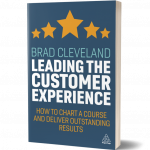I recently traveled to several countries in Asia, with different airlines involved. Somehow, the travel agency that helped me had my passport expiration date wrong by one digit. It resulted in hours of explanations to airlines and immigration officials. And it required lots of additional help from the agency. All from one simple mistake that would have taken 15 seconds to prevent.
 Poor service or even simple product glitches cost time and money. Let’s look at two examples of how you might quantify these issues. One common problem is with process or technology shortcomings. I recently observed customer service interactions with a government agency. One part of the process required a laborious effort to gather information from multiple systems and then do manual calculations—this routine added two minutes to the average time needed to support those customers. The organization handles around 30,000 interactions per month, and their cost to serve customers is $1 per minute. This routine in question was required about a third (33 percent) of the time. The formula they used is interactions per month × minutes used on the issue × frequency × cost per minute. That revealed the cost of the problem. So, 30,000 monthly contacts × 2 minutes × 33% × $1 per minute amounted to a monthly cost of $20,000 (30,000 × 2 × 33% × $1). That’s an annual cost of $240,000 (20,000 × 12). The IT department had done some research and estimated the cost of automating this process (essentially removing the need for that time) would approach a quarter million dollars, $250,000. Too expensive, they assumed. But by looking at the costs of not fixing, they realized they would break even in about a year. Then, the savings would be ongoing.
Poor service or even simple product glitches cost time and money. Let’s look at two examples of how you might quantify these issues. One common problem is with process or technology shortcomings. I recently observed customer service interactions with a government agency. One part of the process required a laborious effort to gather information from multiple systems and then do manual calculations—this routine added two minutes to the average time needed to support those customers. The organization handles around 30,000 interactions per month, and their cost to serve customers is $1 per minute. This routine in question was required about a third (33 percent) of the time. The formula they used is interactions per month × minutes used on the issue × frequency × cost per minute. That revealed the cost of the problem. So, 30,000 monthly contacts × 2 minutes × 33% × $1 per minute amounted to a monthly cost of $20,000 (30,000 × 2 × 33% × $1). That’s an annual cost of $240,000 (20,000 × 12). The IT department had done some research and estimated the cost of automating this process (essentially removing the need for that time) would approach a quarter million dollars, $250,000. Too expensive, they assumed. But by looking at the costs of not fixing, they realized they would break even in about a year. Then, the savings would be ongoing.
Another common opportunity is in communication with customers. An organization that provides travel insurance was able to prevent thousands of customer questions per month—often occurring within several weeks of a claim—by better communicating that payments happen within 30 days. An investment company is preventing unnecessary inquiries by better communicating when tax documents will be ready. While these opportunities can seem obvious in hindsight, too many go unaddressed because the cost to handle and cost to fix them come out of different budgets.
Excerpt from Leading the Customer Experience: How to Chart a Course and Deliver Outstanding Results by Brad Cleveland.
